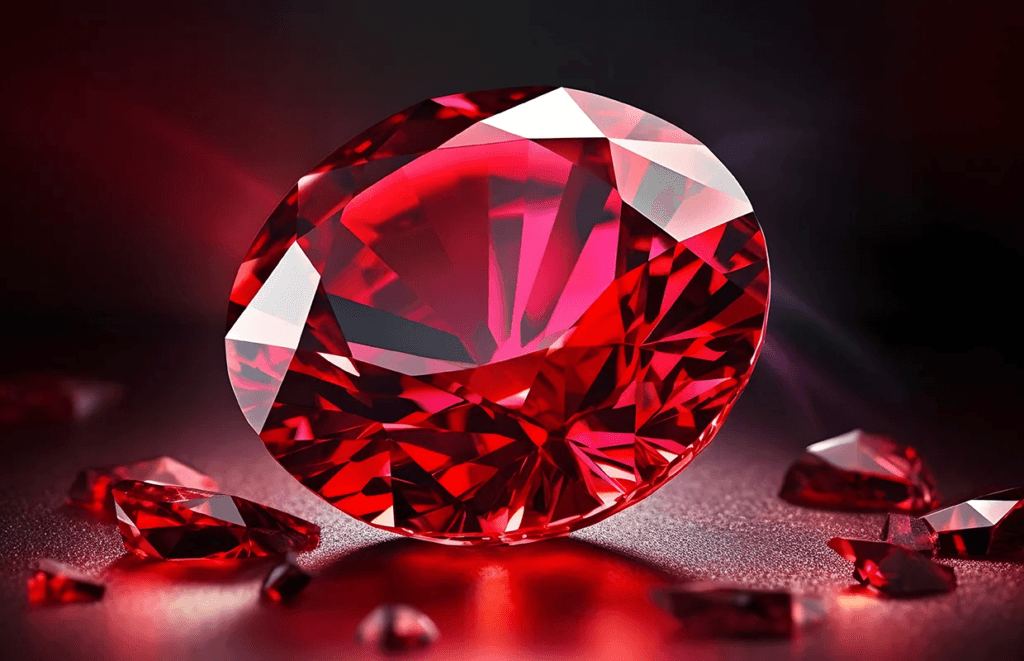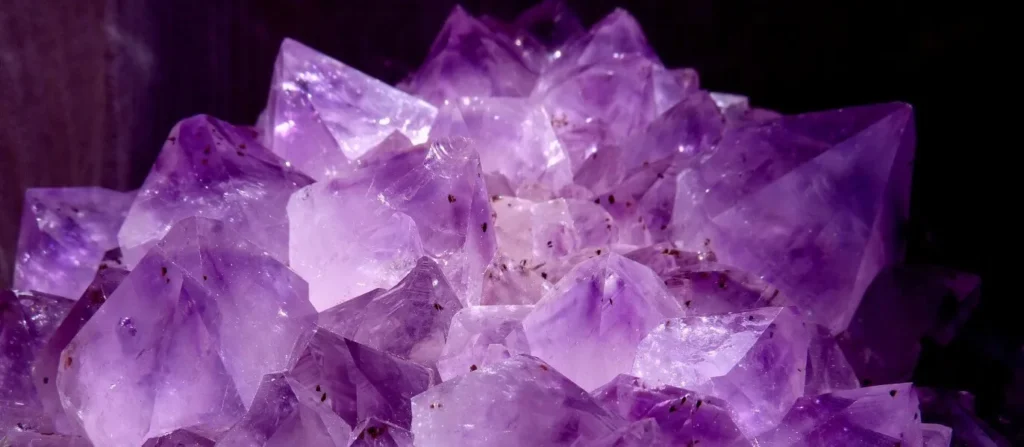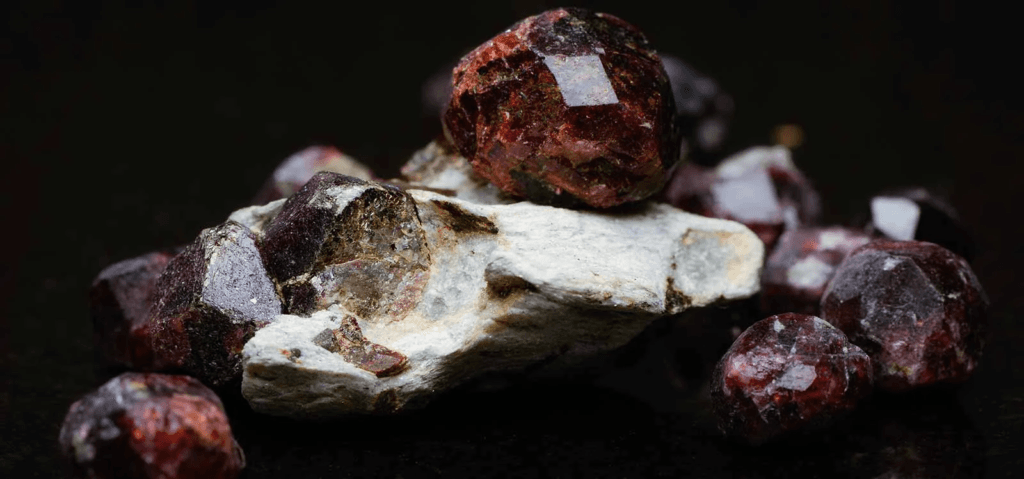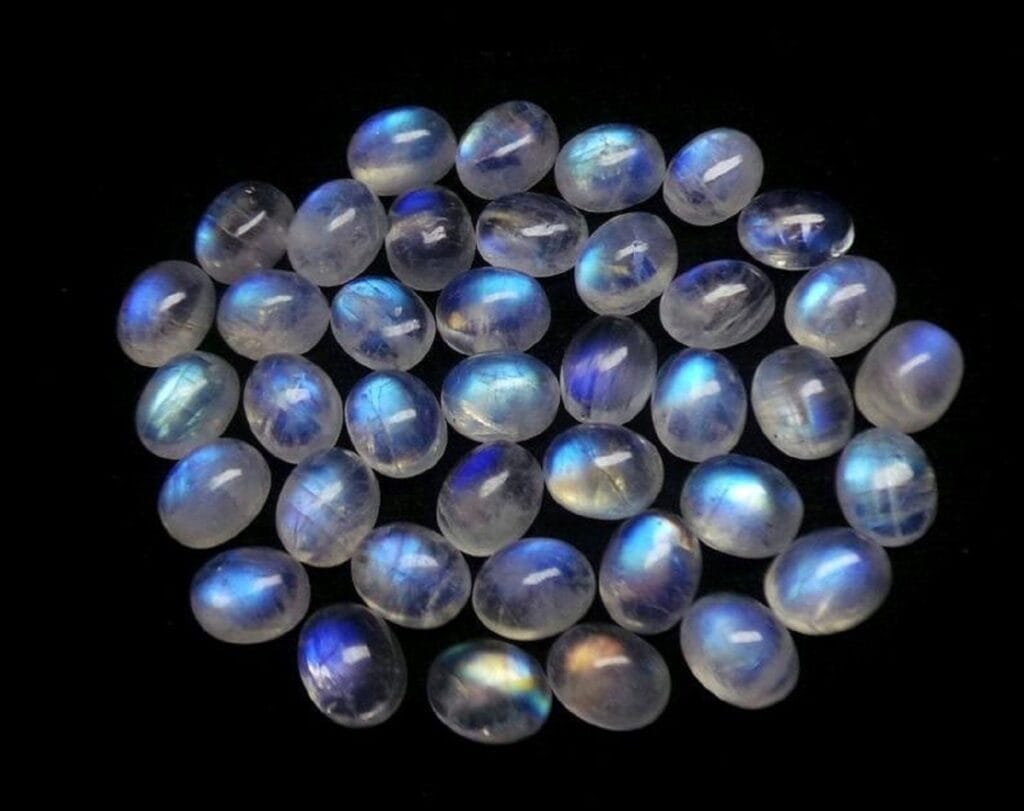Introduction
Rubies, with their captivating beauty and rich historical significance, have always held a special place in the hearts of gem enthusiasts and collectors. These fiery red gemstones symbolize love, passion, and power, and have been cherished for centuries. Among the world’s most prized rubies are those sourced from Mysore and Orissa in India. These regions are renowned for producing rubies with exceptional color and clarity, making them highly sought after in the gem market. In this article, we will explore the beauty, value, and significance of India’s finest rubies, delving into their geological formation, historical importance, and the unique characteristics that set them apart.
What is Ruby?
Scientifically classified as a variety of corundum (aluminum oxide), rubies owe their unique red color to the presence of chromium. This vibrant red hue distinguishes rubies from other varieties of corundum, such as sapphires, which come in various colors except red. Rubies are often associated with powerful symbolism, representing love, passion, wealth, and power. Throughout history, these gemstones have been revered for their beauty and strength, making them a favorite among royalty and gem enthusiasts alike.
When Did Ruby Gain Significance?
Rubies have been significant in Indian culture since ancient times, adorning the jewelry of royalty and deities in temples. In medieval times, rubies were highly prized across the world, traded along the Silk Road and coveted by European nobility. Today, the demand for rubies remains strong in the global gem market, with high-quality specimens fetching record prices at auctions and being featured in high-end jewelry collections.
How is Ruby Formed?
Rubies form under specific geological conditions involving heat, pressure, and mineral composition. They are typically found in metamorphic rocks and are created through the interaction of aluminum-rich minerals and chromium. Natural rubies are often treated to enhance their color and clarity, with common treatments including heat treatment and lead-glass filling. While synthetic rubies are produced in laboratories, natural rubies are more highly valued due to their rarity and unique formation process.
Where to Find the Best Rubies?
India’s Mysore and Orissa regions are renowned for producing some of the finest rubies in the world. These rubies are celebrated for their vivid color, exceptional clarity, and impressive size. Comparatively, other famous ruby sources include Burma (Myanmar), Mozambique, and Thailand. However, Mysore and Orissa rubies hold a special place in the gem market due to their unique characteristics and historical significance.
Who Can Benefit from Ruby?
Rubies have a special place in astrology, being the birthstone for July and holding significant importance in Vedic astrology. Jewelry enthusiasts and collectors cherish rubies for their beauty and symbolic meaning. Investors and gemstone traders also recognize the value of rubies as a stable and appreciating asset. Additionally, rubies are believed to bring health, luck, and positive energy to those who wear them.
Why is Ruby So Valuable?
The value of high-quality rubies is driven by their rarity. Factors such as color, clarity, cut, and origin significantly influence ruby prices. Historically, rubies have fetched record prices at auctions, reflecting their enduring appeal. The demand for rubies in high-end jewelry and auctions remains strong, making them a prized possession for collectors and investors alike.
Which Methods are Used for Ruby Cutting and Grading?
Rubies are cut using various techniques, including step-cut, oval-cut, and cushion-cut, to enhance their beauty and value. Native-cut rubies are often less refined than custom-cut rubies, which are crafted to maximize their visual appeal. Grading systems such as those from the Gemological Institute of America (GIA) and the American Gem Society (AGS) help assess the quality and value of rubies. The cut and treatment of a ruby play a crucial role in determining its overall worth.
Whose Legacy is Tied to Rubies?
Throughout history, Indian royalty and notable figures have adorned themselves with rubies, reflecting their wealth and status. Rubies hold cultural and mythological significance in India, often associated with legends and folklore. The influence of rubies extends to art, literature, and movies, where they are celebrated for their beauty and symbolism.

Conclusion
Rubies from Mysore and Orissa are timeless treasures, admired for their beauty, historical significance, and exceptional quality. As we continue to appreciate these legendary gems, it is important to emphasize ethical sourcing and authenticity checks to ensure the continued legacy of these precious stones. Mysore and Orissa rubies will undoubtedly remain a symbol of luxury and elegance for generations to come.
-
Who is Sonam Raghuwanshi? Understanding Their Influence on India’s Political Landscape in 2025

Sonam Raghuwanshi rose to national prominence when accused of orchestrating her husband’s murder during their honeymoon — a crime that unfolded across states and captured media attention. This case has spotlighted her name across keywords like sonam raghuwanshi, sonam raghuwanshi news, sonam raghuwanshi latest news, sonam raghuwanshi case, sonam raghuwanshi indore, sonam raghuwanshi boyfriend, sonam…
-
Keezhanelli Uses – Exploring Origins, Health Benefits, Intake limits and more

Keezhanelli leaves, derived from the plant Phyllanthus niruri, are celebrated in traditional medicine systems for their wide-ranging health benefits. Known by various names around the world, such as stonebreaker, seed-under-leaf, and bhumyamalaki, these leaves have a rich history and a variety of uses. In this article, we will delve deep into the world of Keezhanelli…



